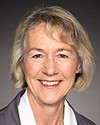Thank you very much, Mr. Chair.
I would like to acknowledge that we're on the traditional territory of the first nation people, and I'd like to thank all of our presenters for coming out and sharing your testimony this afternoon and evening.
I am going to start with Iñigo.
You had mentioned Martin Krkosek's work. We've had Dr. Martin Krkosek come to present testimony. So you've answered a question that I had. He seemed to provide the committee with very objective information, but his conclusion seemed to be that sea lice, from some of the farms he looked at anyway, was a problem over the years they did the study.
Perhaps I could turn to Sonja.
You mentioned IHN in your presentation, but you didn't mention ISA. I'm wondering if you could comment about the presence of ISA, or IHN, and how you're able to draw a conclusion that it doesn't exist on the coast and isn't in any operations on the west coast.



